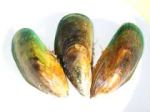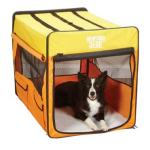Allergies in dogs as well as growth hormone deficiency, adrenal sex hormone imbalance or overproduction of substances by the adrenals can lead to hair loss. The dog may also have dysregulation of the hair follicles themselves. Whatever the cause, it is not pretty to see you pet lose his/her hair. Chow Chows, Pomeranians, keeshonds, Samoyeds, Alaskan malamutes, Siberian huskies and miniature poodles are predisposed already to hair loss which can start at the back of the neck, tail and thighs.
Although many vets will try topical treatments, antibiotics, anti-inflammatories and antihistamines to try and cure the condition, many dogs do not get better. If the cause is a flea or parasite infestation, these treatments may work. But if its caused by allergies, hormone imbalance or other trigger, you may not find much relief in traditional methods. We have discovered that green lipped mussel and deer velvet when combined with colostrum, porphyra (red algae) and thymus works great. But, this product is only available from a veterinarian and goes by the name Penta Genesis. Colostrum is effective in stimulating the immune system and is an antimicrobial, and the deer velvet is high in collagen, essential proteins, and constituents known to support joints. In a study, dogs who had been fed algae (kelp) daily for a period of six months had darker, thicker, and shinier coats. They also scratched less and their skin was not as dry.
We advise that if you have a doggie that is suffering from a skin ailment, please give your vet this article and have them contact www.nzdeervelvetproducts.com for more information (that is a vet only website).








